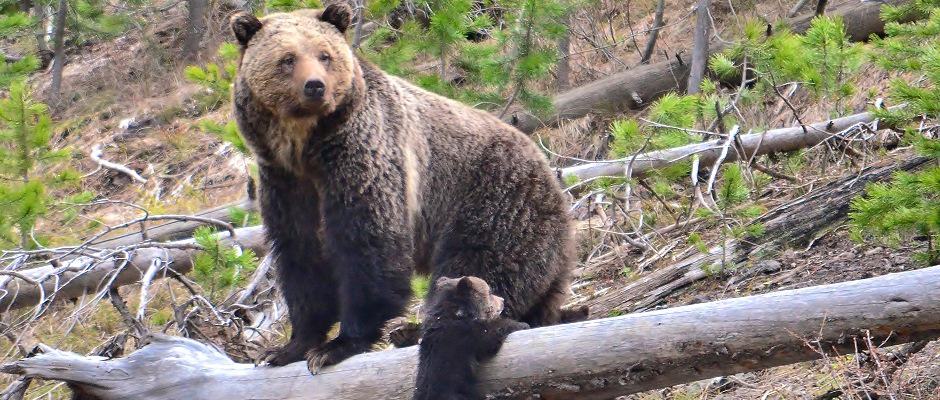Share this article
Hairs show grizzlies prefer declining tree species
A changing environment in the Greater Yellowstone Ecosystem, including a decrease in whitebark pine trees, might be causing some trouble for grizzly bears (Ursus arctos), which prefer to eat the tree’s seeds.
As part of a study published in PLOS ONE, researchers conducted stable isotope analysis on bear hairs collected in Cooke City Basin, Mont., just northeast of Yellowstone National Park, and learned that grizzlies primarily foraged for whitebark pine seeds as well as other plants and berries in the region.
In recent decades, whitebark pine forests have declined as a result of pine beetle infestation, invasive blister rust and landscape-level fires.
“The reason whitebark has been such a focus in grizzly bear conservation is that its seeds are the only food source linked to their reproduction and survival,” said Jack Hopkins, an assistant professor of wildlife biology at Unity College in Maine and the lead author of the study. “Past research suggests that bears have a better chance of surviving during good whitebark years and females produce more cubs the following year.”
When there’s less whitebark in the fall, there’s more chance they’ll seek food at lower elevations, Hopkins said, where they’re more likely to interact with humans, which studies have shown to be the greatest cause of grizzly mortality in the greater Yellowstone area. The Cooke City Basin is an important stronghold for whitebark pine, where dense stands of trees have remained relatively unharmed compared to other areas.
Hopkins and his colleagues measured stable isotopes from bear hair collected from barbed wire hair snares in the fall to determine what bears had been eating that year. Scat analysis doesn’t generally provide reliable dietary estimates for foods that are digestible, Hopkins said. “For instance, it is difficult to know how much meat or seeds a bear consumed during the year when all you have to work with is some bone, hair or pine cone material found in their scats,” he said.
The team found that bears in the region seemed to eat less meat than other bears, relying mostly on whitebark and other vegetation. The method could also be useful to investigate the historic diets of grizzlies or other animals of concern, he said, by examining museum specimens or tissues from other studies
“Such studies can provide biologists a wealth of information about the past to make informed management decisions about the future,” he said.
Header Image: A grizzly bear stands with its cub in Yellowstone National Park. ©Frank van Manen/USGS








